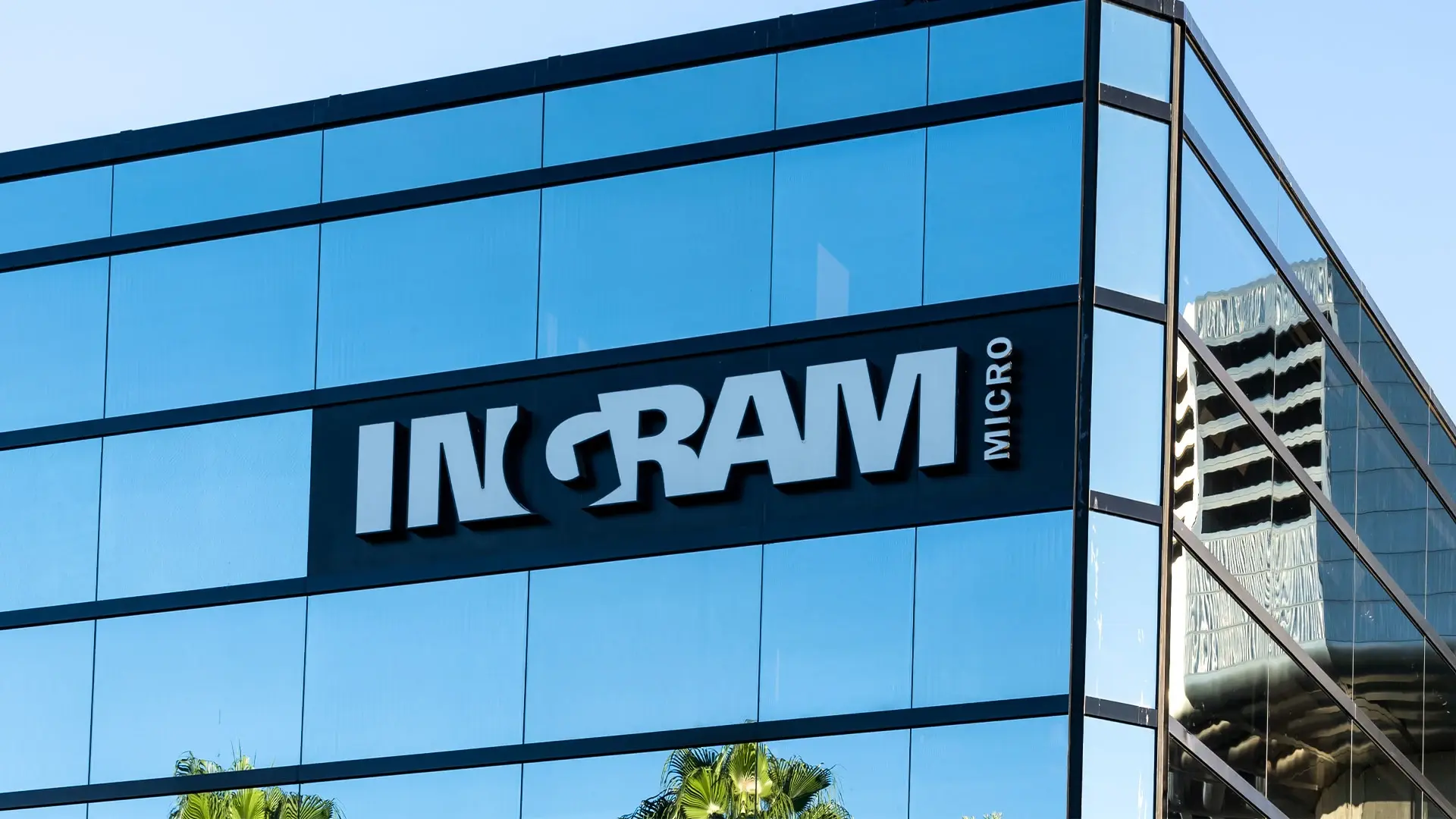Ingram Micro Cyberattack: Lessons for UK SMEs on Supply Chain Risk
The July 2025 ransomware attack on Ingram Micro disrupted next-day hardware deliveries, cloud licensing, and warranty services used by thousands of MSPs and SMEs.
This incident shows how vulnerable our digital supply chains have become - and why now is the time to strengthen yours.
In this breakdown, we explain what happened, what it means for your business, and the essential steps to protect your operations from third-party cyber incidents.
👇 Read on to see how this attack unfolded - and how ITbuilder helps prevent the next one.
"In the UK, everything remains non-functional this morning. Emails to our account manager are bouncing back, and we can't finalise purchases through any platform," said a London-based MSP who wished to remain anonymous. "Fortunately, we have another Microsoft partner available to assist us, but this has completely disrupted our operations."
Brief Summary of the Incident
Ingram Micro, one of the world's largest technology distributors, suffered a devastating ransomware attack on July 3, 2025, that brought its global operations to a standstill for several days.
The breach was orchestrated by SafePay, an emerging and particularly aggressive ransomware group (despite sounding like a payment app!) that has rapidly become one of the most active cybercriminal organisations in 2025.
The attack began when SafePay exploited vulnerabilities in Ingram Micro's GlobalProtect VPN system, likely using compromised credentials or password spray attacks to bypass security controls.
SafePay exploited a mis-configured GlobalProtect VPN at Ingram Micro, using stolen credentials to sidestep MFA and spread ransomware across the network in under 24 hours. Once inside, the gang deployed a QDoor backdoor for persistence, abused legitimate tools like ScreenConnect, deleted shadow copies, and unleashed high-speed ChaCha20 encryption on more than 60 file types, crippling order and licensing systems relied on by partners worldwide.
The compromise exposes a stark supply-chain reality: if a tier-one distributor goes down, UK SMEs lose stock, project timelines, and revenue. Business leaders must demand verifiable MFA on supplier VPNs, schedule independent security audits, segment their own networks, and maintain tested, off-site backups to ensure they can keep serving customers even when a key vendor is offline.
Within hours, ransom notes appeared on employee devices, forcing the company to proactively shut down critical systems including its AI-powered Xvantage platform and Impulse licensing tools.
The incident disrupted order processing, shipping confirmations, and customer communications across the company's global network, which serves nearly 170,000 customers in approximately 200 countries.
Why It Matters for UK SMEs
|
Supply-Chain Dependency |
Business Impact When a Distributor Falls |
Real-World Example |
|
Just-in-Time Hardware |
Project delays, SLA breaches, cash-flow squeeze |
Ingram Micro’s outage halted next-day server deliveries |
|
Cloud Licence Provisioning |
Users locked out of SaaS, loss of productivity |
Impulse platform offline for MSPs |
|
Warranty Returns & RMAs |
Extended downtime on failed assets |
RMA portal unreachable during attack |
What Happened: Inside the 24-Hour Attack
Initial Access
✅SafePay breached via GlobalProtect using password-spray tactics and leaked credentials.✅Mis-configured VPN policies allowed LDAP accounts to bypass MFA.
Lateral Movement & Persistence
✅Automated scripts escalated to Domain Admin in hours, not weeks.✅QDoor backdoor maintained C2 links on port 443 while ScreenConnect gave the attackers user-level camouflage.
Anti-Recovery & Encryption
✅Shadow copies purged, Windows auto-repair disabled, backups hunted and deleted.✅The ransomware used ChaCha20 encryption and x25519 key exchange, targeting roughly 10% of each file for speed and completeness.
Supply-Chain Fallout
✅Xvantage ordering, Impulse licensing, and regional e-commerce portals went dark, delaying shipments worth an estimated £107 million per day.
✅Reseller and MSP partners scrambled to source hardware elsewhere, exposing them to contract penalties and lost trust.
Technical Weaknesses That Enabled the Breach
The Ingram Micro breach exposes several critical vulnerabilities that UK businesses must understand:
1. VPN Security Weaknesses. The attack vector demonstrates how even enterprise-grade VPN solutions can become entry points when not properly configured. SafePay reportedly gained access through Ingram Micro's Palo Alto Networks GlobalProtect VPN, highlighting the importance of implementing multi-factor authentication (MFA) and regular security assessments for remote access systems.
2. Supply Chain Interconnectedness. As a major technology distributor handling approximately $48 billion in annual revenue, Ingram Micro's outage created cascading effects throughout the global IT supply chain. Managed service providers (MSPs) worldwide found themselves unable to serve customers, demonstrating how a single point of failure can disrupt entire business ecosystems.
3. Evolving Ransomware Tactics. SafePay represents a new breed of ransomware operators who have abandoned the traditional Ransomware-as-a-Service (RaaS) model in favour of a centralised approach. The group employs sophisticated double-extortion techniques, stealing data before encryption and using direct intimidation tactics, including phone calls to victims.
4. Legacy System Vulnerabilities. Reports suggest that vulnerabilities in legacy systems and misconfigurations in business applications contributed to the successful breach. This highlights the ongoing risks faced by organisations that have not modernised their IT infrastructure or implemented comprehensive patch management programmes.
Supply Chain Fallout for UK MSPs and SMEs
The Ingram Micro incident has relevance for UK businesses, especially those dependent on large technology suppliers:
Economic Disruption
Industry analysts estimate that Ingram Micro faced daily revenue losses of up to £107 million while systems remained offline. For UK businesses relying on Ingram Micro for hardware, software, and cloud services, the outage caused project delays, inventory shortages, and operational disruptions during a critical end-of-quarter period.
Supply Chain Vulnerability Exposure
The incident underscores broader supply chain vulnerabilities affecting UK organisations. Recent research shows that 95% of UK organisations experienced negative impacts from cybersecurity incidents in their supply chain, significantly higher than the global average of 81%. Furthermore, 34% of UK businesses have no way of knowing when a cybersecurity incident occurs within their supply chain.
Regulatory and Compliance Implications
UK businesses face increasing scrutiny regarding supply chain security, particularly with the forthcoming Cyber Security and Resilience Bill. The Ingram Micro breach serves as a stark reminder that organisations can face significant disruption and potential regulatory consequences when their suppliers suffer cybersecurity incidents.
What This Means for Your Business
The Ingram Micro breach isn’t just a big tech headline, it’s a wake-up call for UK SMEs. Even if your systems weren’t directly affected, the fallout highlights three critical truths:
Your suppliers are your attack surface. If a distributor is compromised, your operations, from hardware orders to cloud licences, are too.
Remote access is still a weak link. Misconfigured VPNs, weak credentials, or unmonitored endpoints create fast-moving attack vectors.
Ransomware is a supply chain issue. It’s not just your data at risk, but your ability to serve customers, meet SLAs, and maintain cash flow.
This is the time to assess your readiness, not just your defences, but your ability to operate when a key partner is down
🛡 How ITbuilder Helps Protect Your Operations
ITbuilder's comprehensive approach to managed IT services directly addresses the vulnerabilities exposed by the Ingram Micro incident:
Proactive Security Monitoring
Our 24/7 managed security services provide continuous monitoring and threat detection across your entire IT infrastructure. Unlike reactive approaches, our proactive monitoring identifies potential threats before they can compromise your systems, helping prevent the type of access that led to the Ingram Micro breach.
Supply Chain Risk Assessment
ITbuilder helps UK businesses evaluate and mitigate supply chain cybersecurity risks through comprehensive vendor assessments and security audits. We work with clients to identify critical dependencies and develop contingency plans that ensure business continuity even when key suppliers face disruptions.
VPN and Remote Access Security
Our managed network services include robust VPN configuration and management with mandatory multi-factor authentication. We regularly assess and update remote access security to prevent the type of credential-based attacks that compromised Ingram Micro's systems.
Backup and Recovery Solutions
ITbuilder's managed backup services ensure that your critical data remains protected and recoverable even in the event of a ransomware attack. Our solutions include automated testing and offsite storage to guarantee rapid recovery capabilities.
Co-Managed IT Support
For businesses with existing IT teams, our co-managed services provide additional expertise and resources to strengthen cybersecurity posture without replacing internal capabilities. This approach helps organisations implement enterprise-level security measures while maintaining operational control.
Immediate and Long-Term Actions to Take
Based on the Ingram Micro incident, UK businesses should immediately implement these protective measures:
Immediate Actions (0-30 days)
Audit VPN Security: Review all remote access systems for proper MFA implementation and regular security assessmentsSupply Chain Assessment: Identify critical suppliers and assess their cybersecurity practices
Backup Verification: Test all backup systems to ensure rapid recovery capabilities
Employee Training: Implement comprehensive cybersecurity awareness training focusing on phishing and social engineering
Medium-term Strategies (30-90 days)
Vendor Risk Management: Develop formal supplier cybersecurity requirements and regular assessment protocolsNetwork Segmentation: Implement network segmentation to limit the impact of potential breaches
Incident Response Planning: Create and test comprehensive incident response procedures
Security Monitoring Enhancement: Deploy advanced threat detection and response capabilities
Long-term Investments (90+ days)
Legacy System Modernisation: Plan systematic upgrades of outdated IT infrastructureCyber Insurance Review: Assess and update cyber insurance coverage considering supply chain risks
Business Continuity Planning: Develop comprehensive continuity plans that account for supplier disruptions
Regular Security Assessments: Implement ongoing vulnerability assessments and penetration testing
Is Your Business Protected Against the Next Supply Chain Breach?
The Ingram Micro incident shows how fragile even the biggest vendors can be.
Let ITbuilder help you build resilience where it counts.
✅ Request a free cyber risk review
✅ Get a supply chain audit and security check
✅ Access co-managed IT support that enhances internal capacity
👉 Book a Free 30-minute Cyber Risk Review now - no jargon, just actionable insight tailored to accountancy firms.
Get board-level cyber coaching, we run a one-hour workshop that translates - NCSC’s 10 Steps into plain English for all professionals. Book here your cyber-security healthcheck here
James Naylor
James Naylor is ITbuilder's Managing Director and Founder. He has worked in technology since the early nineties and, after a decade in the corporate world, went into business himself.
James has lead ITbuilder for over two decades, building the business into the force that it is today, but is still a technician at heart and still very hands on with tech.
Despite growing up in Hertfordshire, James lived in the Netherlands for five years as well as London, before returning and setting up the base in Hertford, where he lives today.
More articles from James Naylor






